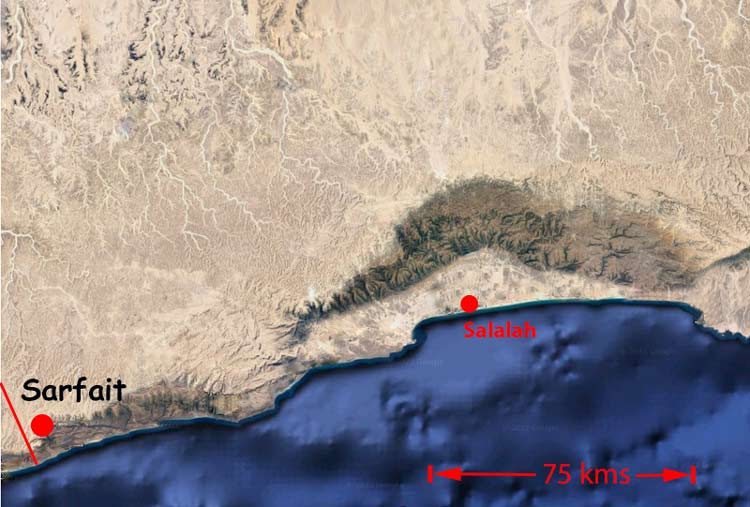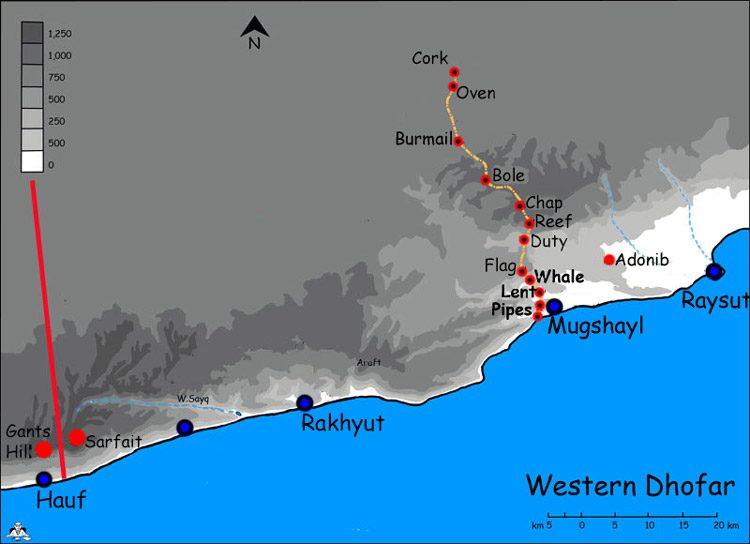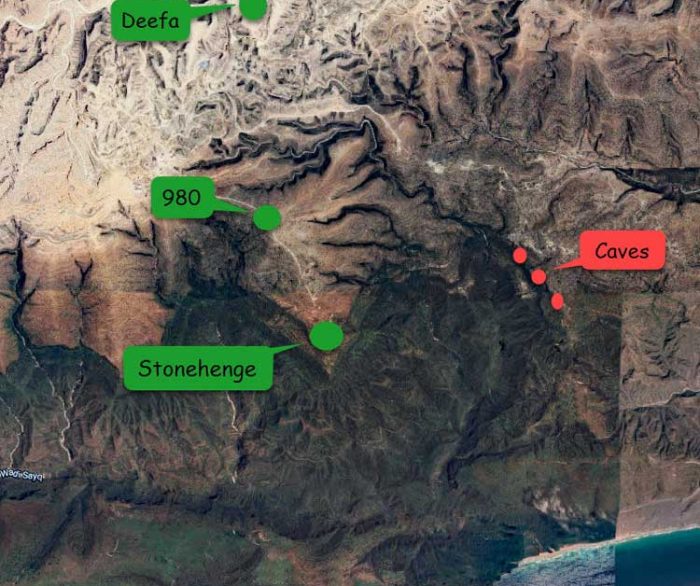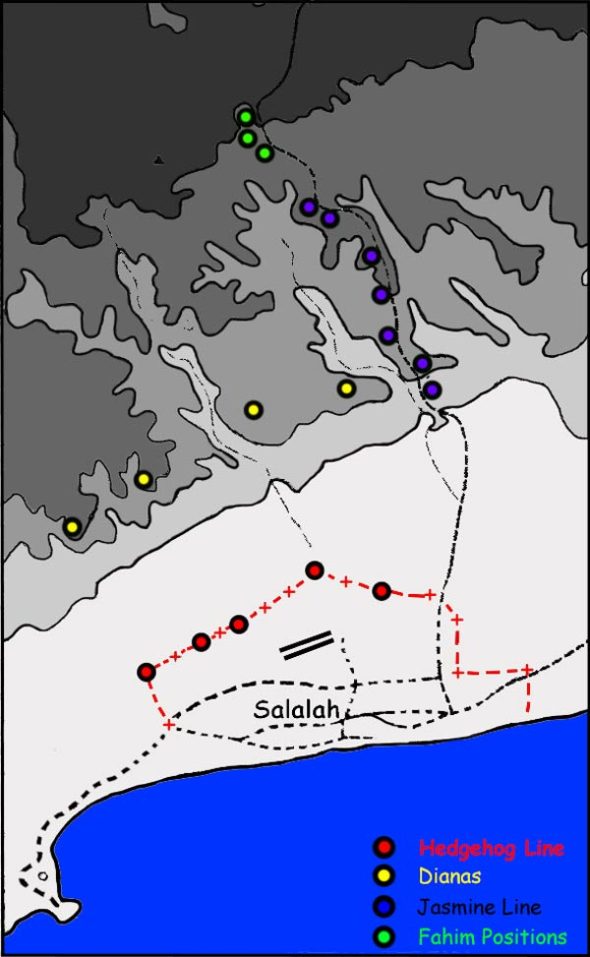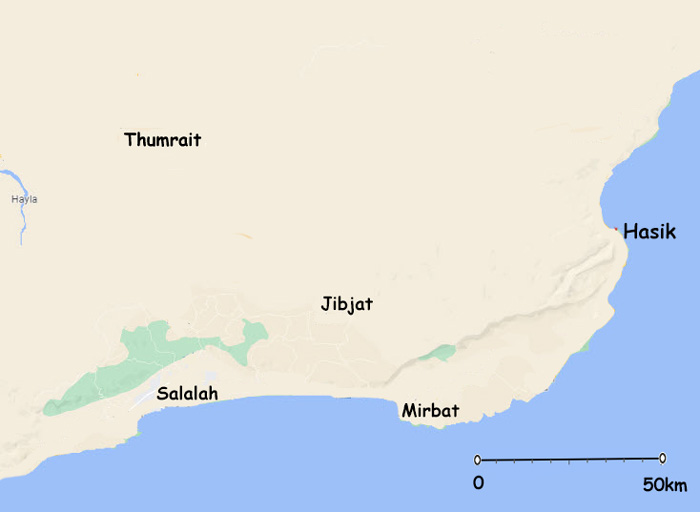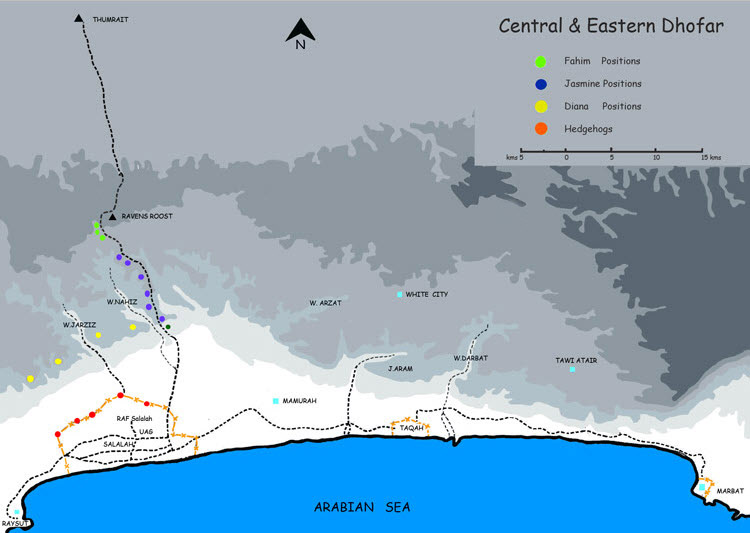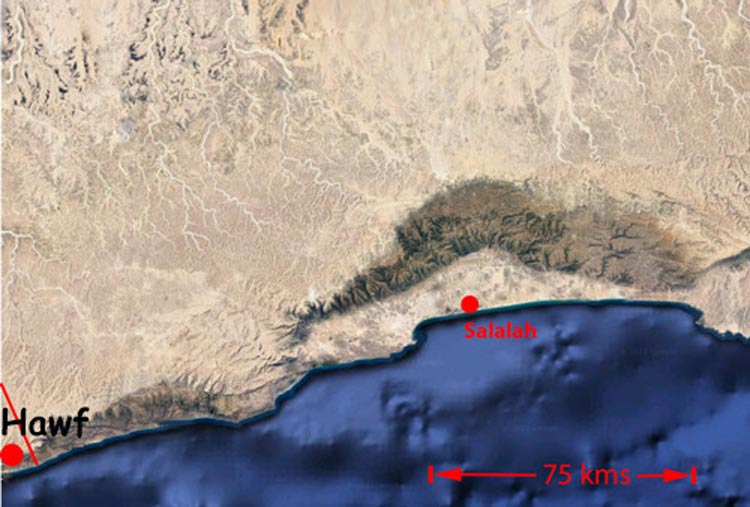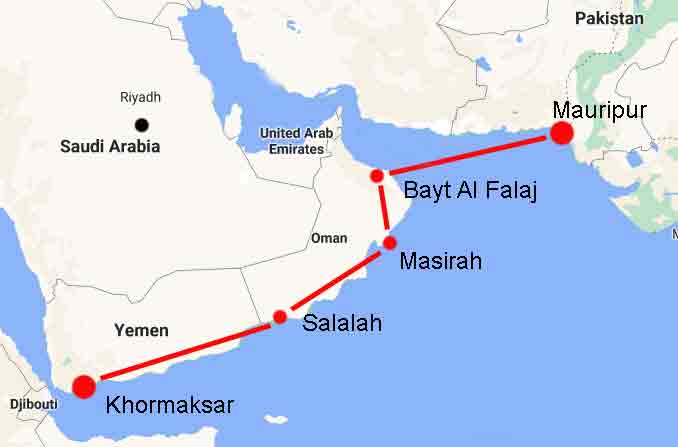
Nobby Grey
I was on the Strikemaster squadron during the period of the Mirbat crisis and I flew top cover after the attacks had taken place.
I have compiled these notes from David Milne-Smith and Sean Creak, Bill Stoker who unfortunately died earlier this year and Roger Cole and Bob Bennett from the SAS who would back up what I am saying here.
There are a couple of myths that need to be dispelled straight away.
The strike attack consisted of two pairs of two aircraft and that there were four aircraft altogether.
Not three as some people have recorded.
The Stikemaster Squadron at Salalah held two fully armed aircraft and two pilots on standby 24 hours a day and in the early morning of the 19th of July the pilots on standby in their baits were Sean Creak and David Milne-Smith
At some time around five or six in the morning. Timings are a bit iffy here unfortunately.
But at some time around five or six they were awoken and made their way in the fog in Salalah to the SOAF ops room.
When they arrived it was clear that this Mirbat contact was no ordinary contact. There was some extraordinary radio traffic.
Marbat was under attack again but communications were very patchy and the size of the enemy force was unknown.
The pilots were briefed by the BATT Major Alistair Morrison that the adoo had overrun the piquet on the Jebel Ali and we have just heard that the adoo have installed a Sphagin HMG on top of it.
The BATT, the firquat and the SAF were in a major contact. Little more information was available to these guys before they took off but we did have agreed radio frequencies that were going to be used. This was important as you cannot have close air support without radio contact with ground troops.
So as the morning wore on the fog sort of broke up a little bit and the cloud began to lift and people could see their way around Salalah
But it was still not high enough to take off never mind carry around any operations and I arrived at work (SOAF TAC) at about this time to find a hullabaloo going on.
Eventually the two aircraft Sean Creak and Milne-Smith got airborne in close formation and started flying over the sea en route to Marbat not knowing what they were letting themselves in for.
On the way they tried to contact the BATT force on the “Blue” SARBE but it was unsuccessful so they had a bit of a problem here. What were they going to do ?
Fortunately Milne-Smith said “Tell you what- try changing to “White” SARBE a different VHF frequency and sure enough on the radio came LCpl Roger Cole of the BATT and Roger told them that Marbat was under attack from several directions by numerous enemy who were descending down from the jebel
Creak was concerned of course about “blue on blue” attacks and asked again where the enemy was and Cole said they are 100yards away and closing on the fort.
He said it again and then Creak arrived underneath the cloud making a hell of a racket as he saw the enemy climbing over the wire which was just down there on this forward slope.
Now Milne-Smith was the No 2 and he was setting up a race track pattern over the sea and eventually Milne-Smith followed Sean Creak in long line astern firing rockets and guns.
Very dodgy firing rockets and guns at low level in level flight because of the ricochet effect that you will get as the weapons bounce off the ground the ground. So quite a risky business doing that.
It was these first attacks that stopped the enemy from over-running the 25pdr gun.
After this Roger Cole handed his radio to Cpl Bob Bennett who as I understand was a qualified FAC to direct the remaining airstrikes.
Creak’s aircraft had in fact been hit seven times and he was forced to return to Salalah.
So he went back to Salalah and Milne-Smith remained there by himself and maintained the racetrack getting rid of his rockets and bullets and then went back and landed at Salalah
Now at this stage I was expecting and hoping to get on the next wave but in comes big Bill Stoker.
He had met Milne-Smith on the pan and was briefed on what was going on and Milne-Smith and Stoker got airborne. I think it was Milne-Smith leading the pair of aircraft.
They got airborne and came towards Marbat for the second set of strikes. (and) they got here I understand, I was trying to work out, at about 09.15 when the jets arrived. But that is open to discussion.
So they set up a race track pattern and individually did separate attacks on the enemy. Bill Stoker had been briefed on the Sphagin Machine Gun which was obviously a real threat to the aircraft but also a threat to the fort.
So he elected to go in and attack the Spaghin on the top of the Jebel Aliand got hit very badly by the Spahgin for his troubles.
He was seriously losing fuel and no option but to return to base. He banged on full power and climbed as high as he could in case the engine failed and he had to glide to Salalah or a safe area to eject.
Milne-Smith was following him at this stage as he was running out of bullets and fuel.
Bill Stoker arrived overhead Salalah closed the throttle in case the engine failed anyway, did a spiral approach, broke cloud at about 800 feet and stuck the aircraft on the runway.
Several people rushed out to see the damage that was done to his aircraft which was quite serious.
Milne-Smith on both sorties survived with no bullet strikes at all on the aircraft. Absolute miracle.
At the end of course, once the attack had finished, the helicopters were doing their stuff and I came in to give some top cover and make jet engine noises. (and) to be on standby in case we were needed again but of course we weren’t.
(We have heard a little about the documentary film. In relation to the film that was made the fort was actually built in South Africa and they got a 25pdr gun in S. Africa for that film).
I should say of course that at the end Bill Stoker was awarded the Distinguished Service Medal for gallantry and indeed so was Neville Baker. (The helicopter squadron commander)
Both of them really deserved it.
I can’t speak about the helicopter operations Nick is going to do that.
| Question: | Was the cloud base gradually coming up during the day? |
| Ans: | Yes and eventually it became like this. |
| Question | When you, they first got here somebody said that the cloud base was 100ft. Presumably the top of the Jebel Ali was in cloud. |
| Ans: | I don’t know how high it was. It was difficult to assess with out instruments by eye. |
| The Jebel Ali must be 200ft You cannot fly along at 100ft firing your bullets. So I would say that they attacked at about 200 – 300ft and the cloud base was probably 500ft which is pretty low when you normally have pulled up to 3000ft So I think that some of the cloud bases that have been quoted are a bit lower than reality in fact. | |
